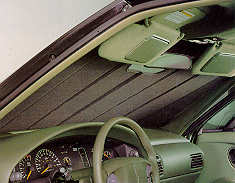 Here’s a quick explanation of different wheel finishes and what metal polishes are best suited for them.
Here’s a quick explanation of different wheel finishes and what metal polishes are best suited for them.
Aluminum: Aluminum is a relatively soft metal and its one of the easier metals to polish and get a bright shine. Aluminum oxidation shows up as a white chalky coating over the metal. To keep polished aluminum wheels looking good, you have to polish them regularly with a metal polish for uncoated metals. This may be a multi-step process, depending on how long it’s been since you last polished your wheels. The Wolfgang Metallwerk Aluminum Polishes offer you a complete series of metal polishes for bare aluminum.
Anodized Aluminum: Anodizing increases the thickness of the aluminum oxide layer to strengthen the underlying aluminum’s natural resistance to corrosion. The resulting finish is very porous and is therefore usually sealed or dyed. Many metal polishes cannot be used on anodized aluminum because they would damage the unique finish. Flitz Metal Polish, Fiberglass & Paint Restorer is one of the few that can be used with excellent results.
Chrome: Chrome is actually a plated metal. Chromium, the metal used in chrome-plating, is highly resistant to tarnish and retains a reflective shine better than any other metal. Eventually, chrome can rust so it’s best to remove any minor rust spots before they turn into a major problem. Again, Flitz Metal Polish, Fiberglass & Paint Restorer is a great choice as is Mothers Chrome Polish.
Stainless Steel: Stainless steel is another metal that is highly resistant to corrosion, staining, spotting, and rust. But, like anything else, maintenance is needed to keep it looking sharp. We recommend Wolfgang MetallWerk Fine Aluminum Polish. Though it says aluminum, it is safe and effective on stainless steel. The only noticeable difference is that it will not create a black residue as you polish, like it would on aluminum. Another excellent metal polish is Wenol Red to polish out oxidation and stains on stainless steel.
Read Autogeek’s Metal Polishing How-To for more tips and step-by-step instructions.
 Carnauba wax is the preferred car wax of collectors and concours enthusiasts because it creates a rich, warm glow. It doesn’t appear to sit on the paint. It transforms the paint into a deep, liquid pool that shimmers under changing light conditions. The more carnauba wax, the more shine.
Carnauba wax is the preferred car wax of collectors and concours enthusiasts because it creates a rich, warm glow. It doesn’t appear to sit on the paint. It transforms the paint into a deep, liquid pool that shimmers under changing light conditions. The more carnauba wax, the more shine. Some manufacturers refine the yellow wax again into an ultra-pure white wax to ensure that the wax produces the clearest, most reflective gloss once applied to the paint. Such is the case with
Some manufacturers refine the yellow wax again into an ultra-pure white wax to ensure that the wax produces the clearest, most reflective gloss once applied to the paint. Such is the case with 

Recent Comments